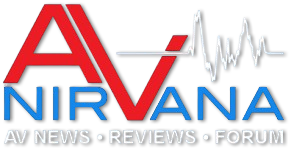John Mulcahy
REW Author
Thread Starter
- Joined
- Apr 3, 2017
- Posts
- 8,949
Here it is with the adaptive timescale, I've done that for the next build.

Follow along with the video below to see how to install our site as a web app on your home screen.
Note: This feature may not be available in some browsers.
the cursor is at 2.87kHz in your post. In this case, the impulse graph is very strongly compressed. Can it be stretched somehow? I put the cursor in different places, but it doesn't change anything.Where are you placing the cursor to align them?
while I was writing the answer, you published a new post.I've done that for the next build.
now I understand. At subwoofer frequencies, the impulse graph was automatically stretched. And on HF it was compressed.for the usual subwoofer range frequencies
FWIW, here's your mdat with the current build, cursor arbitrarily at 82 Hz, and then clicking on Filter IRs at cursor:I put the cursor in different places, but it doesn't change anything.
No, step responses are too slow to generate. I don't think they are at all helpful for alignment, try looking at the step response for the aligned sum at a few different delays.This possibility of alignment by watching the movement of the impuls graph is a very good thing. Dare I ask John, is it possible to add the ability to see how the Step Response graphs behave when aligning? Maybe a button to switch from impulse to Step Response.
Yes.try looking at the step response for the aligned sum at a few different delays
Is "Align IRs at cursor" button aligning for peaks, starts or with cross correlation?
Above plot is the result when left speaker and subwoofer are cross correlation aligned for the left sp. Both have fdw:9 applied. There's no crossover active during measurment. It looks not aligned but the sum of left sp and sub produces better step response and GD with cca than aligning for IR starts or IR peaks. I am a little confused."cca method" meaning what? The plot looks very misaligned, but hard to tell the behaviour at the crossover frequency from unfiltered responses.
I don't know what method it is, but the result you are talking about should be correct. In my experience, don't align to peaks or impulse start, it won't give the best result.It looks not aligned but the sum of left sp and sub produces better step response and GD with cca than aligning for IR starts or IR peaks.
It's a minor point, but in the main Distortion graph it seems like it takes all of the harmonics into account, even if they aren't selected for display?Added: Distortion graphs support Fit Y to data
It looks like the behavior of this instrument on LF and HF has been reversed. Now on the HF impulse is clearly visible, but it is compressed at the LF. The user still cannot stretch the impulse graphs along the horizontal axis. There are no plus and minus buttons that are on all charts.Changed: Adapt the time span shown in the Alignment tool in impulse mode to suit the alignment frequency
Everything is as you explained. It's just that the expectations from the appearance of this tool were another. It was important for me to see how the impulse graphs are located during the alignment. Detailed. But it will be useful for someone as it is now implemented. Thank you.It is to view the filtered responses which will be aligned, its width is a fixed number of cycles of the alignment frequency. If you drag the cursor along the frequency response graph you will see the lower graph width change correspondingly.
I'm talking about Fit Y to data, not THD. I start with 9th as highest harmonic shown:The number of harmonics to use for THD is in the controls, it doesn't depend on which harmonics are shown.
Yes. Thus it is possible. The impulse graph before the peak and after it, it seems to me, few people will be interested in this tool. You can increase the scaling to 2x or 4x the default to have 1-2ms to the left and 4-6ms to the right of the peak.you can just use the cursor frequency as a zoom control.
We use essential cookies to make this site work, and optional cookies to enhance your experience.






